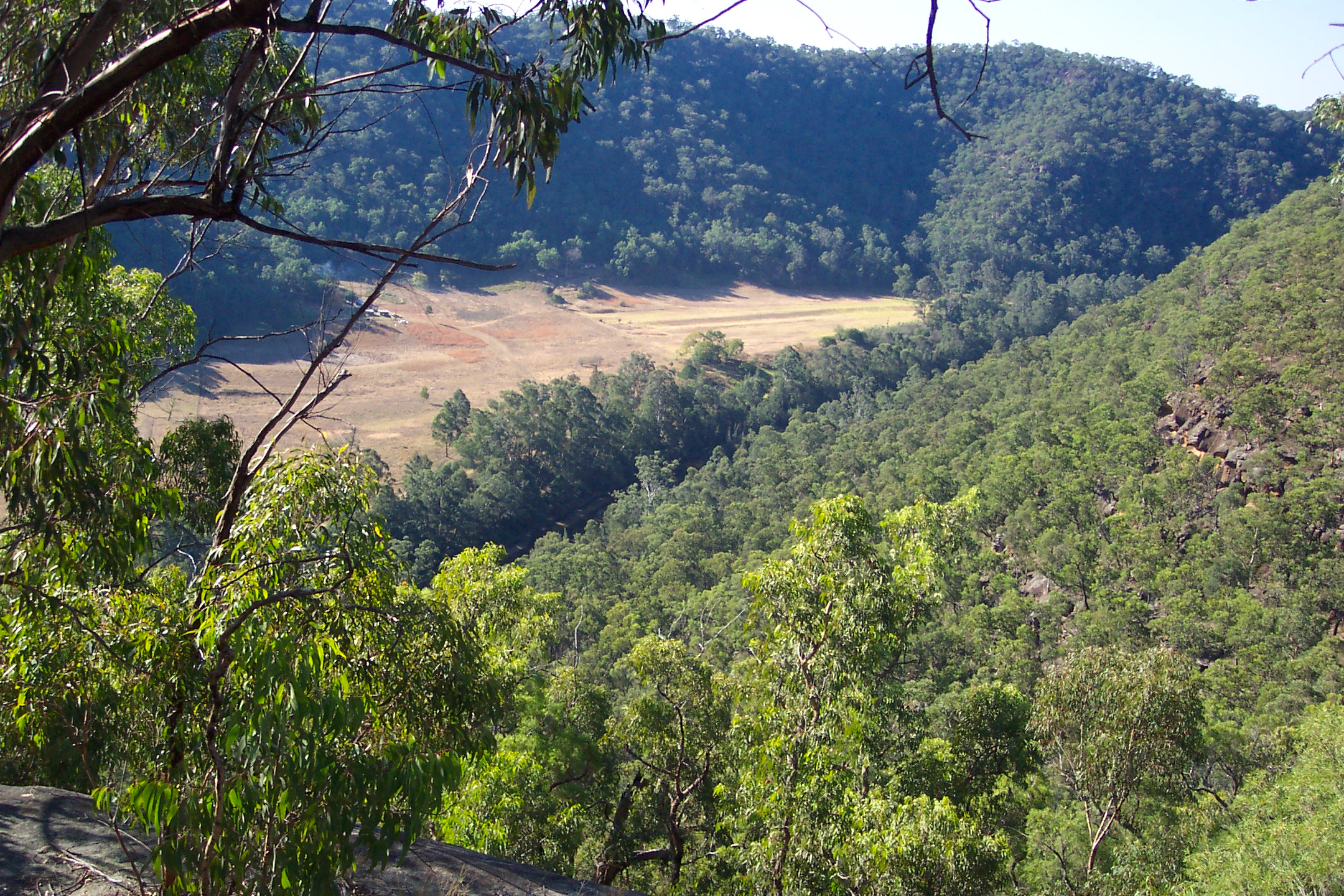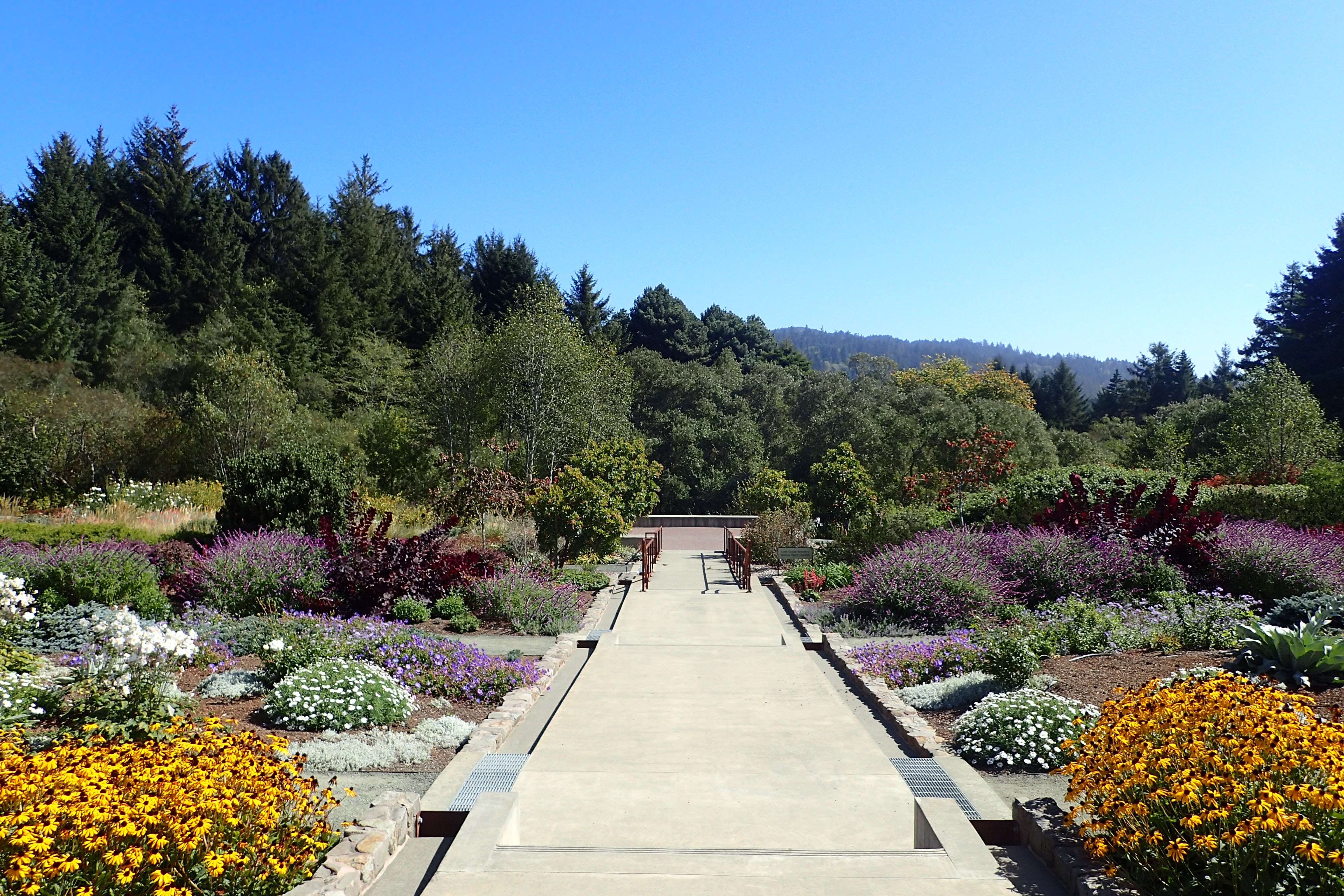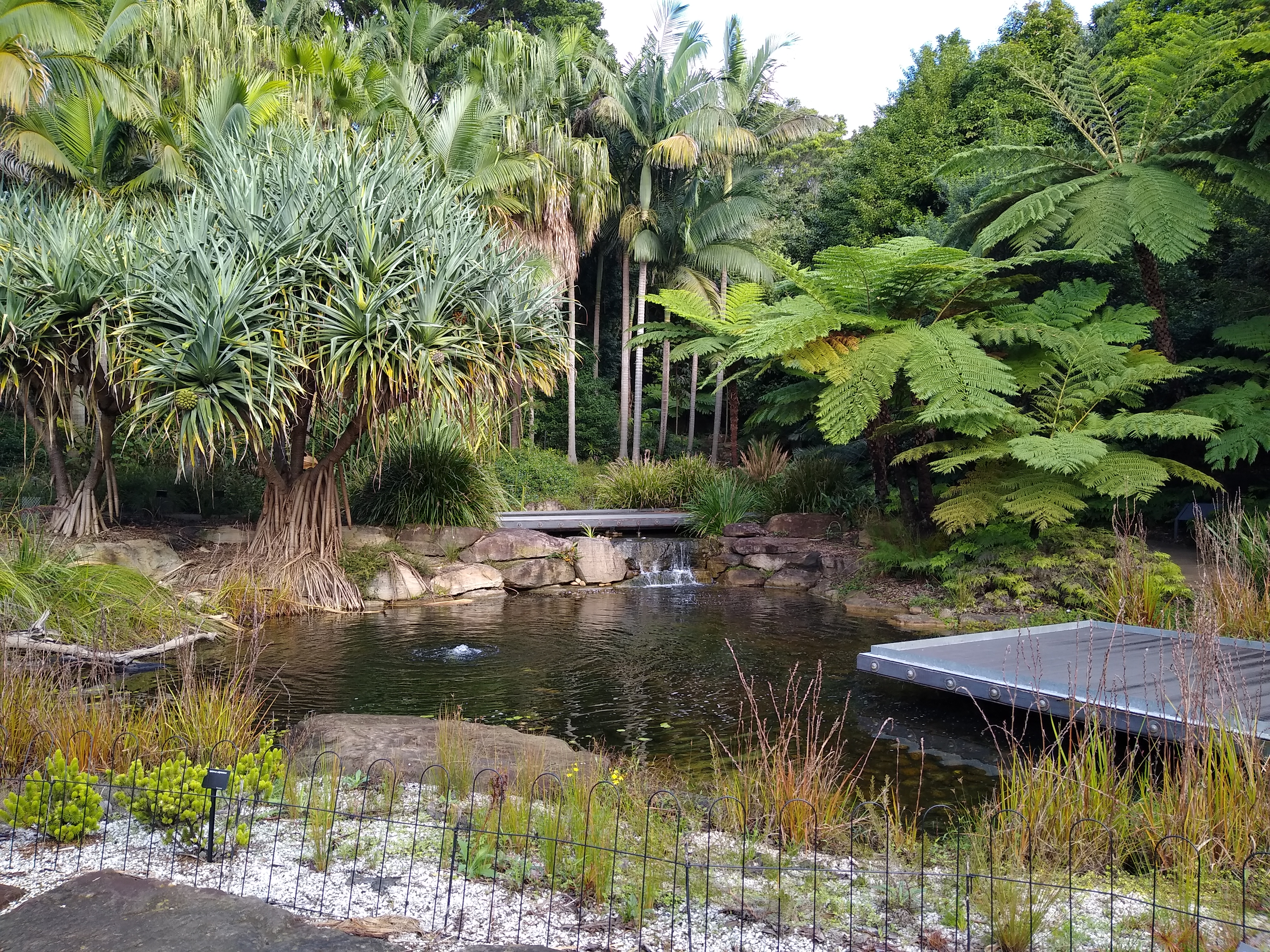|
Wollemia
''Wollemia'' is a genus of coniferous trees in the family Araucariaceae, endemic to Australia. It represents one of only three living genera in the family, alongside ''Araucaria'' and ''Agathis'' (being more closely related to the latter). The genus has only a single known species, ''Wollemia nobilis,'' commonly known as the Wollemi pine (though it is not a true pine) which was discovered in 1994 in a temperate rainforest wilderness area of the Wollemi National Park in New South Wales. It was growing in a remote series of narrow, steep-sided, sandstone gorges north-west of Sydney. The genus is named after the National Park. The Wollemi pine is classified as critically endangered (CR) on the International Union for Conservation of Nature, IUCN's IUCN Red List, Red List, and is legally protected in Australia. After it was discovered that the trees could be successfully cloned, new trees were potted up in the Botanic Gardens of Sydney and Australian Botanic Garden Mount Annan, Moun ... [...More Info...] [...Related Items...] OR: [Wikipedia] [Google] [Baidu] |
Araucariaceae
Araucariaceae is a Family (biology), family of conifers with three living Genus, genera, ''Araucaria'', ''Agathis'', and ''Wollemia''. While the family's native distribution is now largely confined to the Southern Hemisphere, except for a few species of ''Agathis'' in Malesia, it was formerly widespread in the Northern Hemisphere during the Jurassic and Cretaceous periods. Description Members of Araucariaceae are typically extremely tall evergreen trees, reaching heights of or more. They can also grow very large stem diameters; a New Zealand kauri tree (''Agathis australis'') named ''Tāne Mahuta'' ("The Lord of the Forest") has been measured at tall with a diameter at breast height of . Its total wood volume is calculated to be , making it the third-largest conifer after ''Sequoia sempervirens, Sequoia'' and ''Sequoiadendron'' (both from the Cupressaceae subfamily Sequoioideae). The trunks are columnar and have relatively large piths with resinous Cortex (botany), cortices. ... [...More Info...] [...Related Items...] OR: [Wikipedia] [Google] [Baidu] |
Agathis
''Agathis'', commonly known as kauri or dammara, is a genus of evergreen coniferous trees, native to Australasia and Southeast Asia. It is one of three extant genera in the family Araucariaceae, alongside ''Wollemia'' and ''Araucaria'' (being more closely related to the former).de Laubenfels, David J. 1988. Coniferales. P. 337–453 in Flora Malesiana, Series I, Volume 10. Dordrecht: Kluwer Academic. Its leaves are much broader than most conifers. Kauri gum is commercially harvested from New Zealand kauri. Description Mature kauri trees have characteristically large trunks, with little or no branching below the crown. In contrast, young trees are normally conical in shape, forming a more rounded or irregularly shaped crown as they achieve maturity.Whitmore, T.C. 1977. ''A first look at Agathis''. Tropical Forestry Papers No. 11. University of Oxford Commonwealth Forestry Institute. The bark is smooth and light grey to grey-brown, usually peeling into irregular flakes tha ... [...More Info...] [...Related Items...] OR: [Wikipedia] [Google] [Baidu] |
Wollemi National Park
The Wollemi National Park () is a protected national park and wilderness area that is located in the Central West and Hunter region of New South Wales, in eastern Australia. The park, the second largest national park in New South Wales, contains the Wollemi Wildernessthe largest such wilderness area in Australiaand is situated approximately northwest of Sydney. The Wollemi National Park is one of the eight protected areas that, in 2000, was inscribed to form part of the UNESCO World Heritagelisted Greater Blue Mountains Area. The Wollemi National Park is the most northwesterly of the eight protected areas within the World Heritage Site. The national park forms part of the Great Dividing Range. Due to the park's ruggedness, much of it is undiscovered by humans and the many canyons have yet to be explored. The only known living wild specimens of the Wollemi pine (''Wollemia nobilis'') were discovered in 1994. Special efforts were made to protect the trees when the 2019-2 ... [...More Info...] [...Related Items...] OR: [Wikipedia] [Google] [Baidu] |
Living Fossil
A living fossil is a Deprecation, deprecated term for an extant taxon that phenotypically resembles related species known only from the fossil record. To be considered a living fossil, the fossil species must be old relative to the time of origin of the extant clade. Living fossils commonly are of species-poor lineages, but they need not be. While the body plan of a living fossil remains superficially similar, it is never the same species as the remote relatives it resembles, because genetic drift would inevitably change its chromosomal structure. Living fossils exhibit punctuated equilibrium, stasis (also called "bradytely") over geologically long time scales. Popular literature may wrongly claim that a "living fossil" has undergone no significant evolution since fossil times, with practically no molecular evolution or Morphology (biology), morphological changes. Scientific investigations have repeatedly discredited such claims. The minimal superficial changes to living foss ... [...More Info...] [...Related Items...] OR: [Wikipedia] [Google] [Baidu] |
Humboldt Botanical Gardens
The Humboldt Botanical Garden is a 44.5 acres (18 ha) botanical garden located four miles south of Eureka, California, United States. The Garden is near the South Bay portion of Humboldt Bay on the north side of the College of the Redwoods. Grading and site preparation began in August 2003. Featuring views of Humboldt Bay and the Pacific Ocean, the garden opened in 2006, with more development completed by 2008. The Humboldt Botanical Garden (HBG) business office is located in downtown Eureka and is operated by the nonprofit Humboldt Botanical Garden Foundation which had over 1000 members in 2020. HBG is a member of the American Public Gardens Association, the American Rhododendron Society, and the American Horticultural Society Reciprocal Admission program. HBG is listed by the California Native Plant Society as one of the 17 California gardens with notable California native plant collections. The Gardens were first organized in 1991. Originally a farm, the site is a grass ... [...More Info...] [...Related Items...] OR: [Wikipedia] [Google] [Baidu] |
Royal Botanic Garden, Sydney
The Royal Botanic Garden, Sydney is a heritage-listed major botanical garden, event venue and public recreation area located at Farm Cove, New South Wales, Farm Cove on the eastern fringe of the Sydney central business district, in the City of Sydney local government area of New South Wales, Australia. Opened in 1816, the garden is the oldest scientific institution in Australia and one of the most important historic botanical institutions in the world. The overall structure and key elements were designed by Charles Moore (botanist), Charles Moore and Joseph Maiden, and various other elements designed and built under the supervision of Allan Cunningham (botanist), Allan Cunningham, Richard Cunningham (botanist), Richard Cunningham, and Carrick Chambers. The garden is owned by the Government of New South Wales and administered by the Royal Botanic Gardens and Domain Trust. The Botanic Garden, together with the adjacent The Domain, Sydney, Domain were added to the New South Wales ... [...More Info...] [...Related Items...] OR: [Wikipedia] [Google] [Baidu] |
Conifer Cone
A conifer cone, or in formal botanical usage a strobilus, : strobili, is a seed-bearing organ on gymnosperm plants, especially in conifers and cycads. They are usually woody and variously conic, cylindrical, ovoid, to globular, and have scales and bracts arranged around a central axis, but can be fleshy and berry-like. The cone of Pinophyta (conifer clade) contains the reproductive structures. The woody cone is the female cone, which produces seeds. The male cone, which produces pollen, is usually ephemeral and much less conspicuous even at full maturity. The name "cone" derives from Greek ''konos'' (pine cone), which also gave name to the geometric cone. The individual plates of a cone are known as ''scales''. In conifers where the cone develops over more than one year (such as pines), the first year's growth of a seed scale on the cone, showing up as a protuberance at the end of the two-year-old scale, is called an ''umbo'', while the second year's growth is called th ... [...More Info...] [...Related Items...] OR: [Wikipedia] [Google] [Baidu] |
Araucaria
''Araucaria'' (; original pronunciation: [a.ɾawˈka. ɾja]) is a genus of evergreen coniferous trees in the family Araucariaceae. While today they are largely confined to the Southern Hemisphere, during the Jurassic and Cretaceous they were globally distributed. There are 20 extant taxon, extant species in New Caledonia (where 14 species are endemism, endemic, see New Caledonian Araucaria, New Caledonian ''Araucaria''), eastern Australia (including Norfolk Island), New Guinea, Argentina, Brazil, Chile and Uruguay. The genus is familiar to many people as the genus of the distinctive Chilean pine or monkey-puzzle tree (''Araucaria araucana''). No distinct vernacular name exists for the genus. Many are called "pine", although they are only distantly related to true pines, in the genus ''Pinus''. Description ''Araucaria'' are mainly large trees with a massive erect stem, reaching a height of . The horizontal, spreading branches grow in whorls and are covered with leather ... [...More Info...] [...Related Items...] OR: [Wikipedia] [Google] [Baidu] |
New South Wales
New South Wales (commonly abbreviated as NSW) is a States and territories of Australia, state on the Eastern states of Australia, east coast of :Australia. It borders Queensland to the north, Victoria (state), Victoria to the south, and South Australia to the west. Its coast borders the Coral Sea, Coral and Tasman Seas to the east. The Australian Capital Territory and Jervis Bay Territory are Enclave and exclave, enclaves within the state. New South Wales' state capital is Sydney, which is also Australia's most populous city. , the population of New South Wales was over 8.3 million, making it Australia's most populous state. Almost two-thirds of the state's population, 5.3 million, live in the Greater Sydney area. The Colony of New South Wales was founded as a British penal colony in 1788. It originally comprised more than half of the Australian mainland with its Western Australia border, western boundary set at 129th meridian east in 1825. The colony then also includ ... [...More Info...] [...Related Items...] OR: [Wikipedia] [Google] [Baidu] |
Australian Botanic Garden Mount Annan
The Australian Botanic Garden Mount Annan is a botanical garden located in a hilly area of the South-western Sydney, southwestern Sydney suburb of , between Campbelltown, New South Wales, Campbelltown and Camden, New South Wales, Camden, New South Wales. It is the largest botanical garden in Australia, specializing in native plants, with a collection of over 4000 species. Officially opened in 1988, it was known as Mount Annan Botanic Garden, until 2011. History and management The traditional custodians of the land now occupied by the gardens were the Tharawal, Dharawal Indigenous Australians, indigenous Australian people. Later, it became dairy pasture land, before the land was acquired by the Royal Botanic Gardens and Domain Trust in 1984 and The garden was opened to the public in 1988 by the Duchess of York, Sarah, Duchess of York, Sarah Ferguson. The gardens are managed by the Botanic Gardens Trust trading the Botanic Gardens & Centennial Parklands, that also has responsib ... [...More Info...] [...Related Items...] OR: [Wikipedia] [Google] [Baidu] |
Coppice
Coppicing is the traditional method in woodland management of cutting down a tree to a tree stump, stump, which in many species encourages new Shoot (botany), shoots to grow from the stump or roots, thus ultimately regrowing the tree. A forest or grove that has been subject to coppicing is called a copse or coppice, in which young tree stems are repeatedly cut down to near ground level. The resulting living stumps are called Living stump, stools. New growth emerges, and after a number of years, the coppiced trees are harvested, and the cycle begins anew. Pollarding is a similar process carried out at a higher level on the tree in order to prevent grazing animals from eating new shoots. ''Daisugi'' (台杉, where ''sugi'' refers to Japanese cedar) is a similar Japanese technique. Many silviculture practices involve cutting and regrowth; coppicing has been of significance in many parts of lowland temperate Europe. The widespread and long-term practice of coppicing as a landscape ... [...More Info...] [...Related Items...] OR: [Wikipedia] [Google] [Baidu] |
Coniferous
Conifers () are a group of conifer cone, cone-bearing Spermatophyte, seed plants, a subset of gymnosperms. Scientifically, they make up the phylum, division Pinophyta (), also known as Coniferophyta () or Coniferae. The division contains a single extant class (biology), class, Pinopsida. All Neontology, extant conifers are perennial plant, perennial woody plants with secondary growth. The majority are trees, though a few are shrubs. Examples include Cedrus, cedars, Pseudotsuga, Douglas-firs, Cupressaceae, cypresses, firs, junipers, Agathis, kauri, larches, pines, Tsuga, hemlocks, Sequoioideae, redwoods, spruces, and Taxaceae, yews.Campbell, Reece, "Phylum Coniferophyta". ''Biology''. 7th ed. 2005. Print. p. 595. As of 2002, Pinophyta contained seven families, 60 to 65 genera, and more than 600 living species. Although the total number of species is relatively small, conifers are ecology, ecologically important. They are the dominant plants over large areas of land, most notably ... [...More Info...] [...Related Items...] OR: [Wikipedia] [Google] [Baidu] |









